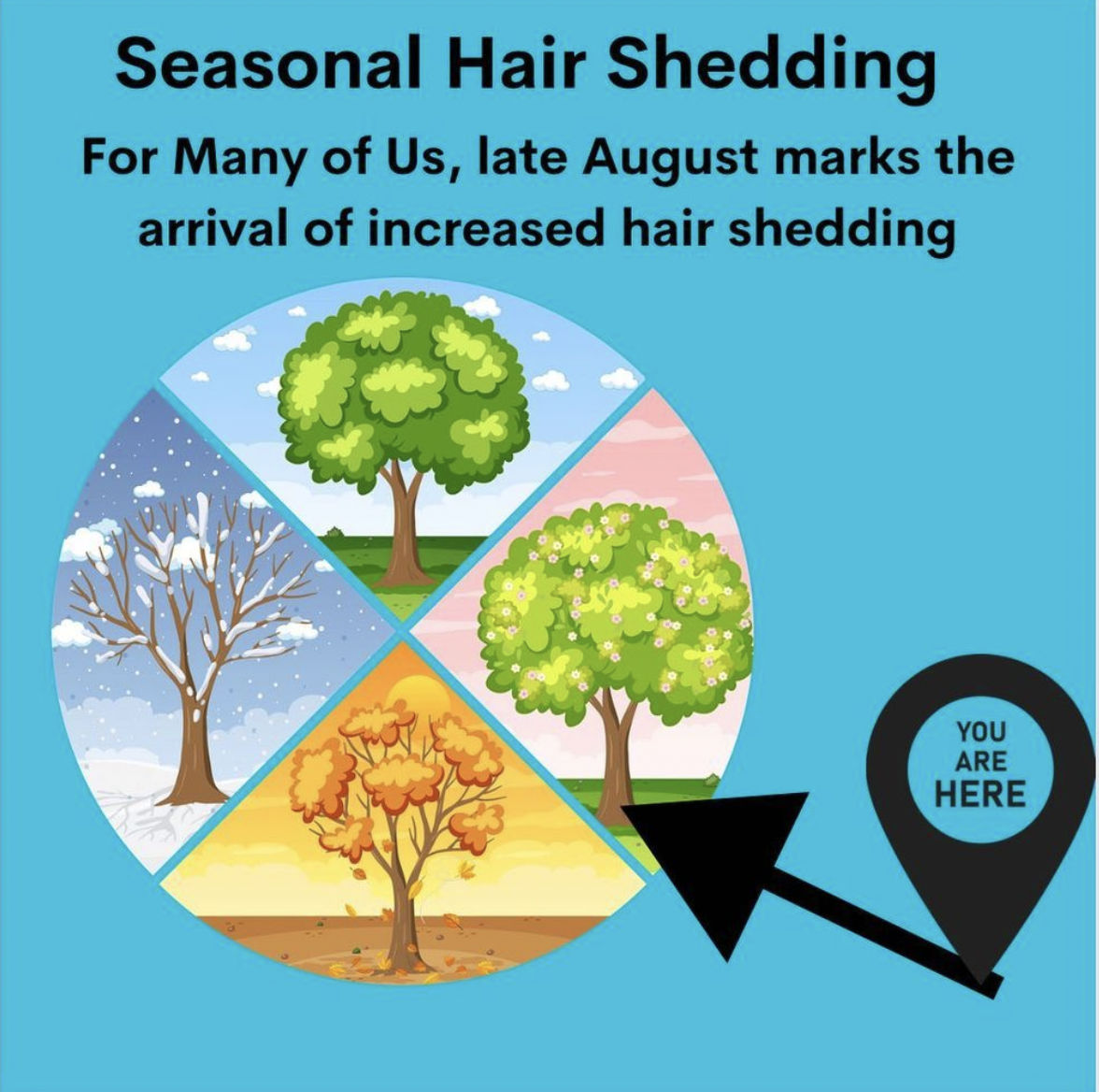August/September Marks the Start of Increased Shedding
Humans Shed More Hair in Late Summer/Early Fall
If you live anywhere north of the equator and start noticing a bit more hair shedding in the months of August and September, you might have something called “seasonal shedding.” That's assuming - of course - that stress, low iron levels, thyroid disease, medications, weight loss, COVID infection and other illness or diseases and other hair loss conditions are not themselves responsible for or contributing to the hair shedding.
Numerous studies support the notion that we humans living in the northern hemisphere of the planet have increased shedding sometime around August /September (give or take a month).
The reasons are not clear but changes in daylight probably have an important role. Once people here the word daylight or anything about the sun, I get asked about vitamin D - but really there is no good evidence yet of this having a big role in seasonal shedding. We don't understand it but factors such as prolactin and various hypothalamic and pituitary hormones may have some role. The reality is we haven't figured this out. And because we haven’t figured this out - large numbers of us start shedding more and more this time of year. By December/January things settle and return back to the way they were (assuming, of course, that stress, low iron levels, thyroid disease, medications, weight loss, COVID infection and other illness and other hair loss conditions are not present and driving ongoing shedding. Any hair loss treatments and/or gimmicks started up in August or September now magically seem to have worked by the time the late Fall/early winter arrives- but the reality is this shedding was going to stop anyways.
References
Courtois et al. Br J Dermatol, 1996 Jan;134(1):47-54.
Hsiang EY et al. Br J Dermatol 2018. 178(4):978-79
Orentreich N. In: Advances in Biology of Skin. Vol IX: Hair Growth. (Montagna W, Dobson RI, eds). Oxford: Pergamon. 1969. 99-108.
Piérard-Franchimont C et al..
Int J Cosmet Sci. 1999 Feb;21(1):15-21.
Randall and Ebling. Br J Dermatol 1991.
Buontempo M et al. J Eur Acad Dermatol Venereol. 2023 Jul 20.
This article was written by Dr. Jeff Donovan, a Canadian and US board certified dermatologist specializing exclusively in hair loss.

